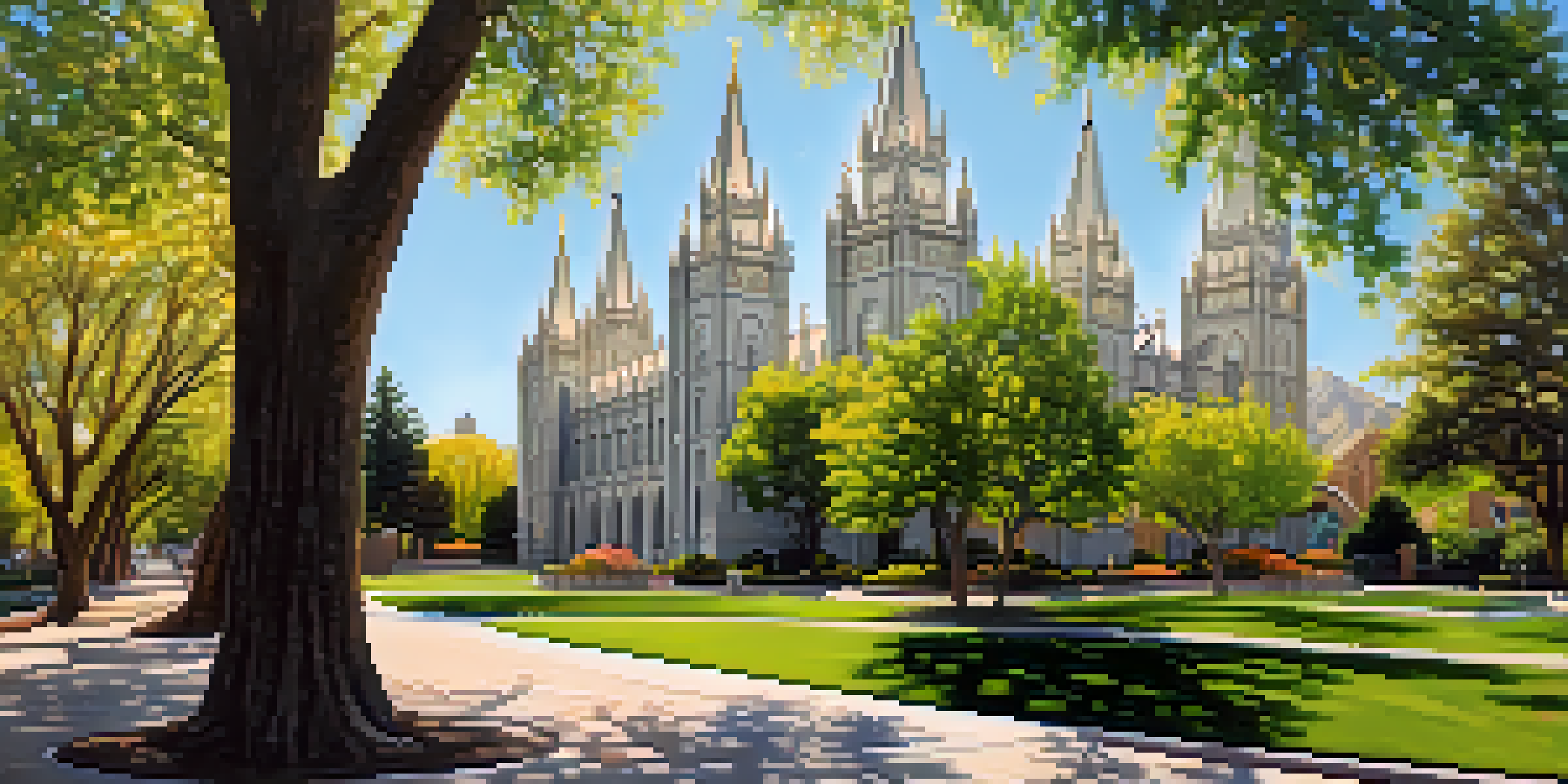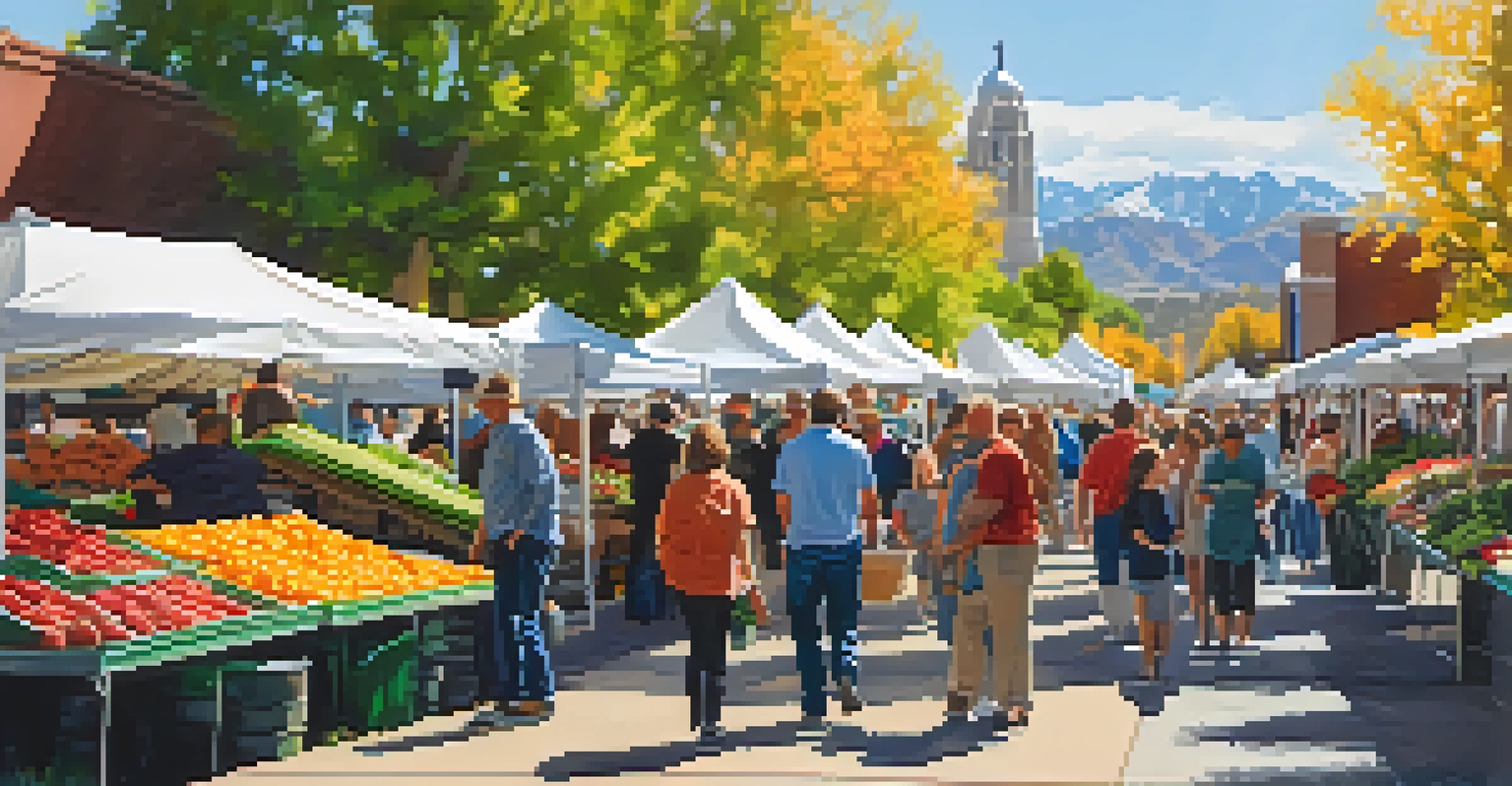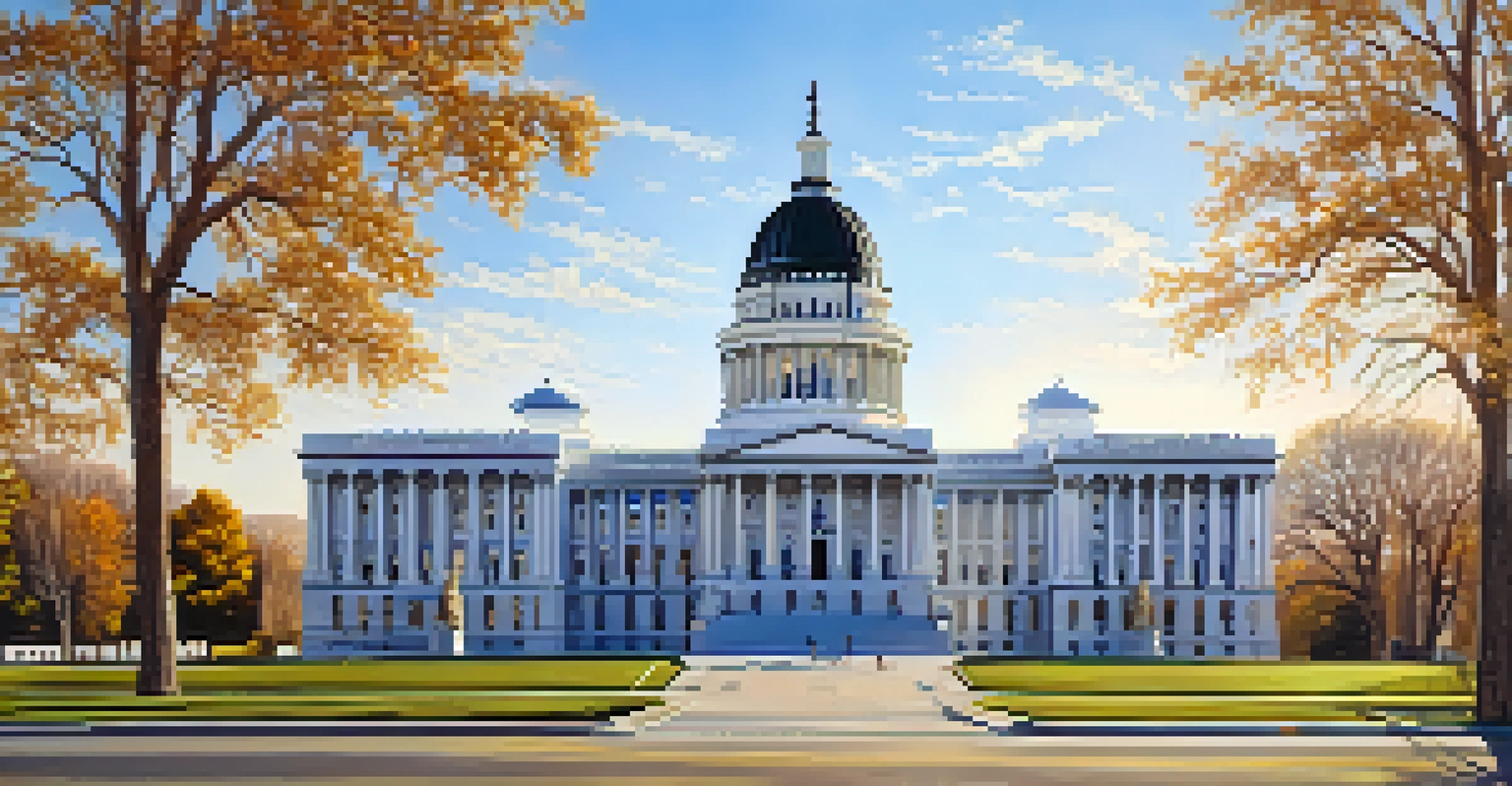Salt Lake City’s Historic Sites: A Glimpse into the Past

The Heart of Salt Lake: Temple Square's Historic Significance
Temple Square is the centerpiece of Salt Lake City, serving as the spiritual heart for the Church of Jesus Christ of Latter-day Saints. This 10-acre area is home to the iconic Salt Lake Temple, which took 40 years to complete and showcases stunning Gothic-style architecture. Visitors can explore the beautifully landscaped gardens and various historic buildings, making it a perfect starting point for understanding the city's heritage.
History is not a burden on the memory but an illumination of the soul.
Aside from the temple, the Square features the Tabernacle, known for its incredible acoustics. Many visitors are drawn to its famed choir, which holds free concerts throughout the year. The rich history and architecture of Temple Square offer a glimpse into the cultural and religious significance that shaped Salt Lake City.
As you wander through the grounds, you'll find historical markers detailing the early pioneers’ journeys to the valley. The combination of faith, community, and perseverance is palpable, making Temple Square a must-visit for anyone interested in the city's past.
Exploring Pioneer Park: A Tribute to Early Settlers
Pioneer Park, located near the heart of downtown Salt Lake City, pays homage to the city's early settlers. This vibrant park is named after the pioneers who arrived in the valley in 1847, and it features a variety of historical monuments, including the Pioneer Memorial Monument. The park not only serves as a tribute to the past but also a gathering place for community events and farmers' markets.

Strolling through Pioneer Park, you can find the iconic Salt Lake City Farmers Market, which showcases local produce and crafts. This lively atmosphere connects the historic significance of the area with the modern-day community. The juxtaposition of the past and present creates a unique experience for visitors.
Temple Square: A Spiritual Hub
Temple Square serves as the spiritual heart of Salt Lake City, showcasing the iconic Salt Lake Temple and rich history.
Moreover, the park offers educational opportunities through various plaques detailing the stories of the pioneers. By sharing their struggles and triumphs, Pioneer Park reminds us of the resilience and spirit that built Salt Lake City.
The Utah State Capitol: Architectural Masterpiece and History
The Utah State Capitol stands majestically on Capitol Hill, showcasing neoclassical architecture and stunning views of the city. Completed in 1916, this building not only houses the state legislature but also serves as a testament to Utah's aspirations and growth. Visitors can take guided tours to learn about the building’s history, art, and the legislative process.
The past cannot be changed. The future is yet in your power.
The capitol's dome is one of the tallest in the United States, and the intricate details of its construction reflect the pride Utahns have in their state. The interiors are adorned with murals and historical artifacts, each telling a part of Utah’s story. This makes the Capitol not just a functional building, but a museum of sorts.
Surrounding the Capitol, the grounds are beautifully landscaped with memorials that honor Utah's veterans and other significant figures. This combination of natural beauty and historical gravity makes a visit to the Utah State Capitol both educational and inspiring.
The Historic City Creek Canyon: Nature Meets History
City Creek Canyon is a natural oasis just minutes from downtown Salt Lake City, rich in both beauty and history. The canyon has served as a vital water source for the city since its early days, and the creek itself was integral to the area’s development. Today, it offers a scenic escape with picnic areas, hiking trails, and stunning views of the surrounding mountains.
As you hike along the trails, you can find remnants of the early water system that helped the city flourish. The blend of natural and human history here creates a unique narrative of survival and adaptation. The canyon is a reminder of the importance of nature in the growth of Salt Lake City.
Pioneer Park: Celebrating History
Pioneer Park honors early settlers and hosts community events, blending historical significance with modern-day culture.
Moreover, City Creek Canyon is a popular spot for wildlife watching, making it a perfect place to connect with both the environment and the history of the city. With its combination of recreation and storytelling, the canyon is a hidden gem that offers a glimpse into the past.
Fort Douglas: A Military Legacy in Salt Lake City
Fort Douglas, established in 1862, played a crucial role in the history of Salt Lake City and the surrounding region. Initially built to protect early settlers, it later became a significant military installation during various conflicts. Today, the fort is a historic site that offers insight into the military history of the area.
Visitors to Fort Douglas can explore the well-preserved buildings and learn about the lives of soldiers stationed there. The fort also houses the Fort Douglas Military Museum, which showcases artifacts and exhibits related to Utah's military history. This provides a unique opportunity to reflect on the sacrifices made by those who served.
Additionally, Fort Douglas is a reminder of the city's strategic importance in the West. Its history intertwines with the broader narrative of America’s expansion and development, making it an essential stop for anyone interested in the military heritage of the region.
The Beehive House: A Glimpse into Pioneer Life
The Beehive House, once the home of Brigham Young, is a significant historic site that offers a glimpse into the life of early Mormon leaders. Built in 1854, this home is named for its beehive-shaped structure, symbolizing hard work and cooperation. Visitors can tour the home, which is filled with period furnishings and artifacts, providing a window into the daily lives of the pioneers.
As you walk through the rooms, you'll learn about Brigham Young's role in founding Salt Lake City and the challenges he faced. The house is a reflection of the community's values and aspirations, showcasing how early settlers lived and thrived in a new land. The stories shared during the tour are both educational and poignant.
Utah State Capitol: A Historic Landmark
The Utah State Capitol stands as a neoclassical architectural masterpiece, representing Utah's growth and aspirations.
The Beehive House is more than just a historical building; it's a testament to the resilience and ingenuity of the early settlers. This site allows visitors to connect with the past in a tangible way, making it a memorable stop on any historical tour of the city.
The Old Salt Lake City Hall: A Symbol of Civic Pride
The Old Salt Lake City Hall, built in 1894, is a stunning example of Richardsonian Romanesque architecture. This historic building served as the city’s administrative center for many years and is now a cherished landmark. Its intricate details and grand design reflect the pride and ambition of Salt Lake City's early leaders.
Visitors can admire the building's exterior and learn about its significance in the city's history. The hall has witnessed countless important events and decisions that shaped the community. Its preservation serves as a reminder of the city's commitment to honoring its past.

Today, the Old City Hall is often used for events and public gatherings, bridging the gap between its historical significance and modern-day civic life. This blend of history and community engagement makes it a vital part of Salt Lake City's ongoing narrative.
The Legacy of the Salt Lake City Library: A Cultural Beacon
The Salt Lake City Library is not just a repository of books; it's a cultural hub that reflects the city's commitment to education and community. Established in 1898, the library has evolved over the years, with the current modern building opened in 2003. Its innovative design and stunning architecture have earned it numerous accolades and made it a landmark in the city.
Inside, the library houses an extensive collection of books, archives, and resources that tell the story of Salt Lake City and its diverse population. Beyond its collection, the library hosts events, classes, and exhibitions that engage the community and foster a love for learning. This makes it a vital part of the cultural fabric of the city.
The Salt Lake City Library’s role extends beyond traditional library services; it actively promotes literacy, creativity, and community involvement. By visiting, you can experience firsthand how this historic institution continues to shape the future while honoring the past.